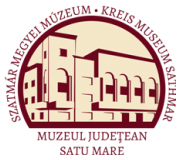Diaconescu, Marius (szerk.): Nobilimea romanească din Transilvania (Satu Mare, 1997)
Adrian Andrei Rusu: Nobilimea Românească şi biserica în secolul al XV-lea
almost constantly recruited not from the lower members of the community involved religious evolutions in forms hard to define. Even with certain proofs pleading for conversion to Catholicism, some restrictive observations should be mentioned. They refer to the absence of a clergy belonging to the Catholic Church, the continuation of church building and decoration in a previous tradition and finally the number of families converted to Catholicism. The latter did not exceed 10-15. The proofs show that the catholic phenomenon existed not only through names, but also by the capacity of this social group to adopt the Reform, as revealed by later records of the 17th century. It is important to present catholic success in Haţeg in a limited way. It was probably a situation characterized by numerous engagements, with fonnál effects, based on an active traditional ground, together with more radical options that could be identified on a case-to-case bases, largely determined by social opportunism. Only the formal aspect we have referred to explains on one hand the absence of a regular catholic religious life, and on the other hand it prepares the next stage of engagements, of a reformed nature. This last stage is equally important to be known, because what has happened then is a continuation of social and religious practices initiated in the 15th century. In order to define them we should choose a more refined word, that of heterodox. A very peculiar world has been delimited as a result of antagonistic interactions, with very few models to follow. We could only guess that Haţeg has been closely followed by similar realities in the neighboring Banat or Zarand. 151
